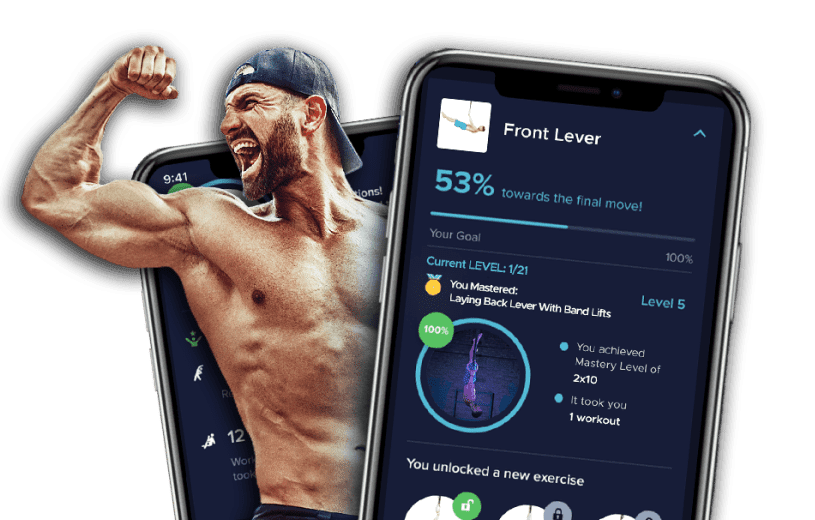

The Key to Long-Term Shoulder Health: Complete Guide to Bulletproof Shoulders – 2025
📖 Read Time: 8 Minutes | 🎯 Difficulty: All Levels | 🏥 Focus: Injury Prevention & Recovery | 📅 Updated: January 2025
🏆 Join the Tribe of Movement & Calisthenics Athletes!
People just like you that are working with their own body weight to get strength, lose fat, build muscle, recover from injuries and live their best lives!
✅ 100,000+ Athletes
✅ Recover from Injuries
✅ Bulletproof Shoulders
Takes 5 minutes • Personalized to your level • No credit card required
All joint dysfunctions are categorized as such because they are incapable of expressing the required range of movement for the person in question. So a dysfunction of the shoulder joint would simply be a shoulder which is not functional or fit for purpose.
A very elderly person who can flex their shoulder to more than 90 degrees is doing great, considering that most people of that age do not partake in functions which require more. So we would call a joint which shows that level of mobility functional for the person, providing there is also an absence of pain.
💡 Real-World Example:
However, 90 degrees shoulder flexion for a 28-year-old calisthenics athlete who likes to train handstands is definitely not sufficient – we would call that joint dysfunctional, because it can’t offer the 180-degree flexion we need.
So it’s hugely important not just to assess oneself for healthy joint ranges and biomechanics, but also to understand what level of mobility you require exactly for your own specific functions.
👉 Key Insight: Functional vs. Optimal Mobility
We don’t need to achieve mobility or range of motion for the sake of it. Long hamstrings give us great advantages for using our legs in extreme ranges, but what is the use of that to someone who is mostly sedentary? You only need what you need. If you already have it, you’re healthy and functional!
The 3 Essential Modes of Joint Training
A lot of us however are not sedentary and are quite active in life in general, as well as following our own training programs and goals. Depending on your current situation, you’ll need one of these approaches:
🏥
Rehabilitation
Working on fixing a pain point or faulty biomechanics. This is corrective exercise focused on healing and restoring proper function after injury or dysfunction.
🛡️
Pre-habilitation
Maintaining and caring for your joints to avoid any future injuries. This is proactive care to keep your shoulders healthy and functional long-term.
⚡
End-Range Conditioning
Adapting your joints to perform better for sport or training. We’re conditioning the joints and biomechanics for more extreme conditions and advanced movements.
So, at any stage of life we may need to enter into one of these modes of joint training, depending on the present status of joint health and also bearing in mind our physical goals. The process for improving all of those situations is thankfully not too different!
Essential Shoulder Care Protocol
The main things we need to do to look after our shoulders:
- ✅ Getting regular professional or self-assessment
- ✅ Getting manual therapy (as and when needed)
- ✅ Having a daily self-care and maintenance routine
- ✅ Working on proven methodologies for rehab, prehab or functional training
Ricky Warren’s system for mobility includes all of the above aspects, helping the client to first assess exactly what is going on for themselves and then move on to the appropriate module for their functional needs.
We are excited to share Ricky’s knowledge and self-help system with you via our comprehensive online mobility course Bulletproof Shoulders, which offers a detailed methodology for assessing and training your own mobility using the latest sport science techniques.


🔥 Limited Time: Free Personalized Assessment
GET A FREE CUSTOMIZED TRAINING PLAN!
Start your life-changing journey with calisthenics and get lean, strong and mobile while unlocking and mastering over 100 new gymnastics & calisthenics skills.
It only takes 5 minutes, and no credit card is required!
🛡️ Bulletproof Recovery
“I used to have chronic shoulder pain from years of poor posture and overhead lifting. Learning about rehabilitation vs. prehabilitation was a game-changer. The Movement Athlete’s systematic approach helped me understand exactly what my shoulders needed – not just random exercises, but targeted mobility work based on my specific limitations. Now my shoulders are stronger and more mobile than they’ve been in years!”
— Maria S., Movement Athlete
Pain-free shoulders • Targeted mobility • Systematic approach • Long-term health • Functional movement